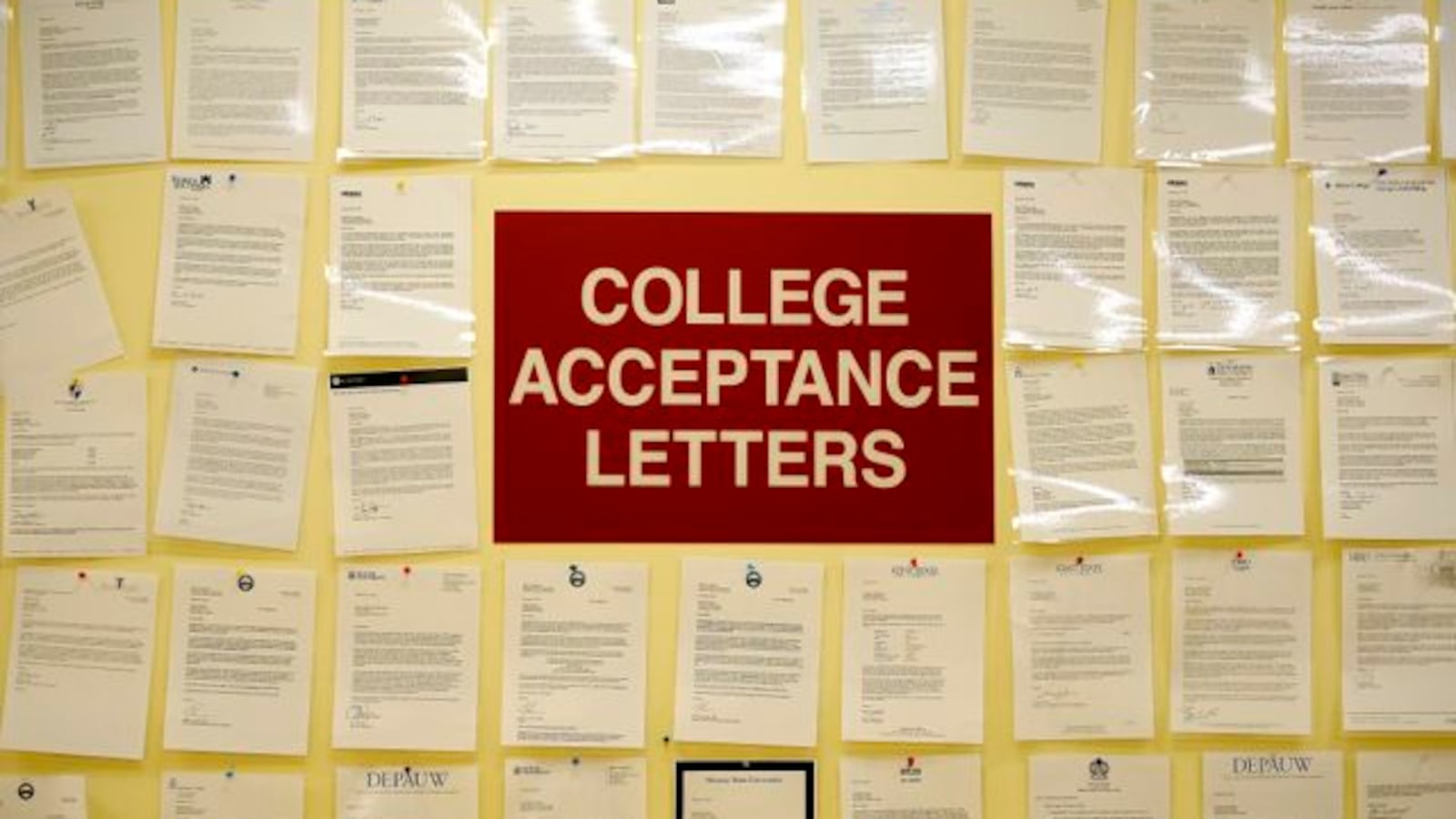New research finds a simple strategy can modestly boost the share of poor students who go on to college: requiring, and paying for, all students to take the ACT or SAT.
And while the impact isn’t huge, the policy is relatively cheap — just $34 per student increases four-year college attendance by about 1 percentage point for low-income students.
“Although these increases in the four-year college enrollment rate might not appear to be dramatically large, relative to other educational interventions this policy is inexpensive and currently being implemented on a large scale,” writes Joshua Hyman, an assistant professor at the University of Connecticut.
In other words, the policy is straightforward, easy to scale, and offers a good bang for the buck.
This validates recent efforts like those in New York City and Tennessee to expand access to these tests, which are required to enroll at most colleges and universities, though it also suggests that the effect of those policies is likely to be small.
The research, recently published in the peer-reviewed journal Education Finance and Policy, examined Michigan’s policy to require — and, importantly, pay for — high school juniors to take the ACT. (About a dozen other states now administer the SAT or ACT to all students.)
Unsurprisingly, the number of students taking the exam jumped from 56 percent statewide to 91 percent after the policy was implemented in 2007. College attendance in the state then increased by nearly 2 percentage points, though the study can’t show how much of the increase was because of the mandatory ACT.
Hyman found that, prior to the policy, a substantial number of Michigan’s low-income students didn’t take the ACT even though they would have scored at or above the standard for college readiness. That might been due to financial or logistical barriers, like the cost of the test (between $30 and $50) or difficulties traveling to an exam center on a Saturday. (Both the SAT and ACT offer fee waivers to low-income students, but the study notes that the waivers are underused.)
“I show that for every ten poor students taking a college entrance exam and scoring college-ready, there are an additional five poor students who do not take the test but who would score college-ready if they did,” writes Hyman.
The researcher isolated the effects of mandating and paying for the ACT by comparing trends in college enrollment at two groups of schools. Before the rule was put in place, the ACT offered the exam at some schools on weekends, but not at all in other schools. Taking the test became substantially more convenient for students attending schools where the exam had previously not been administered.
At those schools, Hyman found that the policy increased four-year college enrollment by at least 0.6 percentage points — from 32.1 percent to 32.7 percent. The effect was larger — about 1 percentage point — for boys, students in poverty, and students attending high-poverty schools.
These effects are fairly small, but significant for two reasons.
First, since the initiative likely also helped students at other schools, that’s very likely a conservative estimate of the policy’s impact. A similar study of Maine’s SAT requirement showed much bigger effects on four-year college enrollment, around 2 or 3 percentage points.
Second, paying for students to take the ACT is cheap relative to other policies designed to help students. On a per-dollar basis, Michigan’s initiative led to bigger college enrollment gains than college tuition aid, Head Start, and large reductions in class sizes in early grades.
“The mandatory college entrance exam policy is more cost-effective than traditional [college financial] aid at boosting postsecondary attainment,” the study states.
Still, the paper ends on a cautionary note.
“The mandatory ACT is far from a cure-all,” Hyman writes. “In spite of the policy, there remains a large supply of disadvantaged students who are high-achieving and not on the path to enrolling at a four-year college.”


